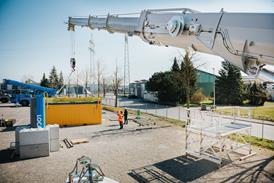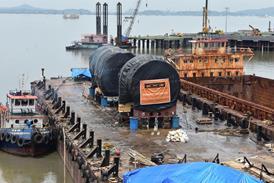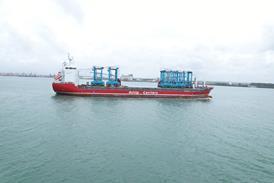November 8 - Containership demolition has reached an all-time high, as ships with a combined capacity of 500,000 teu have already been scrapped this year, 4.2 times more than the scrapping activity for the same months in 2015, reports The Baltic and Inter
"The demolition activity in the last three months surprised BIMCO positively and it exceeded our initial expectation based on the appalling 2015 demolition activity," BIMCO chief shipping analyst Peter Sand said.
"The advance is a push in the right direction, as demolition activity is one of the essential measures needed to be taken to rebalance the container shipping industry."
Sand added: "It is important that the demolition of excess capacity comes sooner rather than later, as there is still a huge delivery schedule hanging over the container shipping industry for the rest of this year and well into 2017-2018. However, the high demolition activity is currently softening the net supply growth rate of the container shipping capacity and will prevent a darker outlook for the years to come, if maintained."
Shipping consultancy Drewry recently stated that the fact that the containership orderbook is at a virtual standstill is a major positive as is rapidly increased scrapping. But it added that "even so, the next two years will still be very challenging on the supply side with annual fleet growth of between 5 percent and 6 percent and many more ultra large container vessels (ULCVs) to be delivered."
At the same time BIMCO noted that contracts for new containerships in the first eight months of 2016 tumbled 84 percent from the first eight months of 2015 as measured using "compensated gross tonnage," which indicates the amount of work needed to build a particular sort of ship.
According to BIMCO, "With the last three months accounting for more than 41 percent of the total demolition in 2016, the activity is picking up and is primarily generated by the Panamax containerships."
BIMCO said that the demolition of Panamax containerships, as measured by teu capacity, accounts for 47 percent of the total demolition in 2016, whilst the demolition of intermediate containerships, ranging from 3,000 to 7,999 teu, accounts for 30 percent, while smaller feeder containerships, which range from 100 teu to 2,999 teu, accounting for 23 percent.
"The events in 2016 have shown, that the tools to turn the container shipping industry around are being used and are working," Sand said. "The recommendations to consolidate fleets and demolish ships are being taken seriously within the industry."
















